Harvest, home.

Patchy holiday weather, patchy harvest weather. The two go hand in hand of course – harvest and a holiday from school – a relic from when everyone was needed in the fields. We rush out to pull the washing in as the combine roars into the field as if it were on fire.
We are enveloped in a gold-grey dust-cloud. Straw lines the gutters all the way to Hungerford, through it and beyond, festooning hedges all the way: the shining gold days of June and July stored in each fluttering yellow ribbon. At night, we go gleaning straw from windrows lying thick as gold plaits across the stubble. The uniform straws rudely spurt accumulated dew up the insides of our bare legs. John Barleycorn has the last word.
There are grain spills on the bends of the lanes, for the last of the farmland birds. Modern farming has become ‘an ecological holocaust’ (according to John Lewis-Stempel in The Running Hare) and harvest for me is a bitter-sweet romantic time when the recent rural past is perhaps at its most tangible. On this farm, the wild bird cover, nectar strips, beetle banks, grassy headlands, widening field margins and chalk grassland break up the chemical aggregation of the arable: rich seams of life and colour, joy and hope holding the patchwork together.

The secret combe radiates the sun’s heat. The soil over chalk in this deep hidden valley is thin and dry and the plants are specialists; low growing, mat forming: even the thistles don’t bother with stems. Lie down in this fragrant, wild kitchen garden and your clothes keep the scent for days. Wild basil, calamint, cucumbery salad burnet, thyme on the raised castle mounds of anthills and wild marjoram all tremble with the life on them. Embroidered through are trefoils and bedstraws, a heather-haze of red bartsia, blue-violet self-heal, and eyebright: pansyish, purple veined, white with a splash of egg yolk. Scabious and harebells are sky-coloured. There are waves of butterflies, moths and bees with every jubilant step. The silhouettes of buzzards and kites rotate over it all with the shadowy arms of a windmill.

We count the days down now and on a hot day, bookended by rainy ones, make a mad day-trip to beloved Bude. A bank of slate-grey cloud is mistaken prematurely for the sea and a hedgerow cloud of blue sloes for a patch of summer sky. The treat of a pretty beach hut with a yellow door helps us pack a week at the beach into one day. We swim in the sea-pool until the tide overwhelms it.

Then one morning, the air is fresher with the tang of the sea in it, though we are miles from it – and the light has a softer, nostalgic quality. As my hand reaches for its practised turn on the smooth-worn handle of the kissing-gate, it is chill and damp on my palm; the gate wrapped and spun shut with spider silk that crackles when I open it. The August-absence of birdsong slips into September and a robin sings its autumn lament. It makes such a catch in my heart and falters my steps.
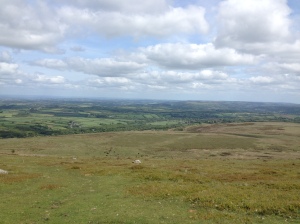
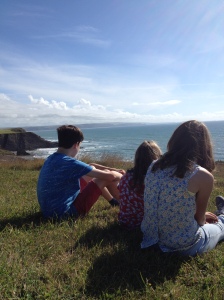
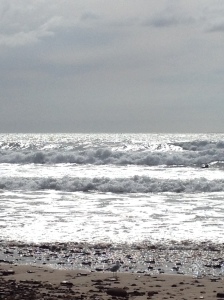
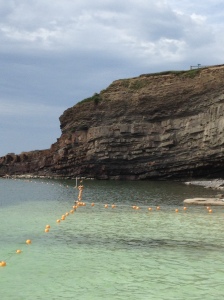
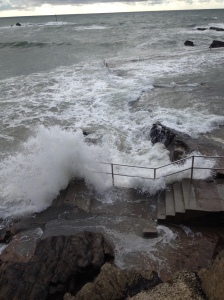 comes ours again, for the last time. The sea pool is inundated with a crashing swell under an iron sky, but when we scramble, breathlessly, out, the sun warms the cliffs to amber and out to sea, beyond Barrel Rock, sets a silver bar on the horizon. The girls’ hair tangles and falls in salty ringlets and my son’s face is lit with a sandy glow. They belong.
comes ours again, for the last time. The sea pool is inundated with a crashing swell under an iron sky, but when we scramble, breathlessly, out, the sun warms the cliffs to amber and out to sea, beyond Barrel Rock, sets a silver bar on the horizon. The girls’ hair tangles and falls in salty ringlets and my son’s face is lit with a sandy glow. They belong.
